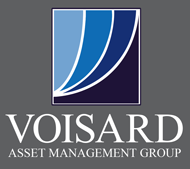If your annual income excludes you from being able to utilize the tax-code benefits of a Roth IRA, you may be a good candidate for a Backdoor Roth IRA. This is the coined name for the strategy of funding a Roth IRA, specially designed for tax-payers subject to the restrictions that prevent high-income earners from contributing to a Roth IRA in a traditional manner. Since 2010, the IRS hasn’t had income limits that restrict who can convert a traditional IRA to Roth IRA, which has opened the door for high wage-earning individuals to utilize Roth IRAs and benefit from their tax-advantageous characteristics. Since then, the “Backdoor” Roth IRA strategy has been utilized by many Americans.
Is This a Strategy for Me to Consider?
As mentioned, the trouble arises because of the income limitations that make some individuals ineligible to contribute to a Roth IRA in 2020. Direct Roth IRA contributions begin to phase out when annual modified adjusted gross income (MAGI) is above $196,000 for a married couple filing jointly, or $124,000 for an individual. If your annual MAGI is above these levels, you cannot contribute directly to a Roth IRA. However, utilizing the “Backdoor” strategy may be an effective way to funnel money into a Roth IRA. This strategy is particularly appealing if you do not have any regular IRA’s in your name already (which will be explained, below).
Roth IRA Benefits
A Roth IRA can be a valuable part of a broader investing and tax-planning strategy as having both Traditional and Roth retirement accounts can help with tax diversification in retirement. The tax-free growth, tax-free retirement income, and legacy planning advantages associated with Roth IRAs make them advantageous to all investors. Contributions to a Roth IRA have no up-front tax deduction, which is different than a pre-tax traditional IRA, 401(k) retirement plan or other tax-deferred account, but the earnings grow tax-free. Also, no taxes are paid when withdrawals are made from the account. Another appeal to Roth IRA’s is that unlike a traditional retirement account’s required minimum distribution, there is no time requirement on when you must start withdrawing money. This makes Roth IRAs a very appealing option for those wanting to leave this tax-preferred money to their heirs.
How This Strategy is Implemented
First, a Traditional IRA will need to be established and a non-deductible contribution made, within the contribution limits. For 2020 the limit is $6,000 per individual, $7,000 for individuals 50 and over. Then, at a later date, those funds will need to be moved over to a Roth IRA. This will be done as a Roth IRA conversion, not a Roth IRA contribution. When completed, you’ll have to pay taxes on any appreciation that occurred prior to the conversion (make sure you file IRS Form 8606 every year you do this!). Assuming it was left in the Traditional IRA for a short period of time, you will not have much, if any, appreciation. Therefore, on the conversion date, the taxation will be minimal. Only post-tax dollars can go into a Roth IRA, so if you deducted your traditional IRA contributions (now or in the past) and then decide to convert your traditional IRA to a Roth IRA, you’ll have to pay taxes on the conversion.
The Pro-Rata Rule
If you already have tax-deferred money in an IRA, this strategy gets a little more complicated. When determining your tax bill due on converting funds from a traditional IRA to a Roth IRA, the IRS will calculate the percentage of the amount you’re converting in relation to all money in your tax-deferred IRAs, aggregated. This includes traditional, SEP & Simple IRAs, but workplace retirement plans (401(k) plans, etc.) aren’t subject to this aggregation. For example, if your non-Roth IRAs combined consist of 60% pre-tax and 40% after-tax money, that ratio determines what percentage of the money converted to a Roth is taxable. In this example, no matter how much money you convert, or which IRA account you move money from, 60% of the amount transferred to the Roth will be taxable.
A properly implemented backdoor Roth IRA strategy can give you more financial flexibility in retirement, regardless of your current income. Backdoor Roth IRA’s should not be rushed into without adequate thought and planning as each person’s federal & state tax situation, investment strategy and financial plan are unique. It is highly recommended that you consult a professional accountant or tax advisor before implementation of this strategy. If you feel this strategy is worth considering within your holistic financial plan, feel free to reach out to one of our Wealth Managers at Voisard Asset Management Group. We would be happy to discuss an initial assessment and provide you with feedback.



